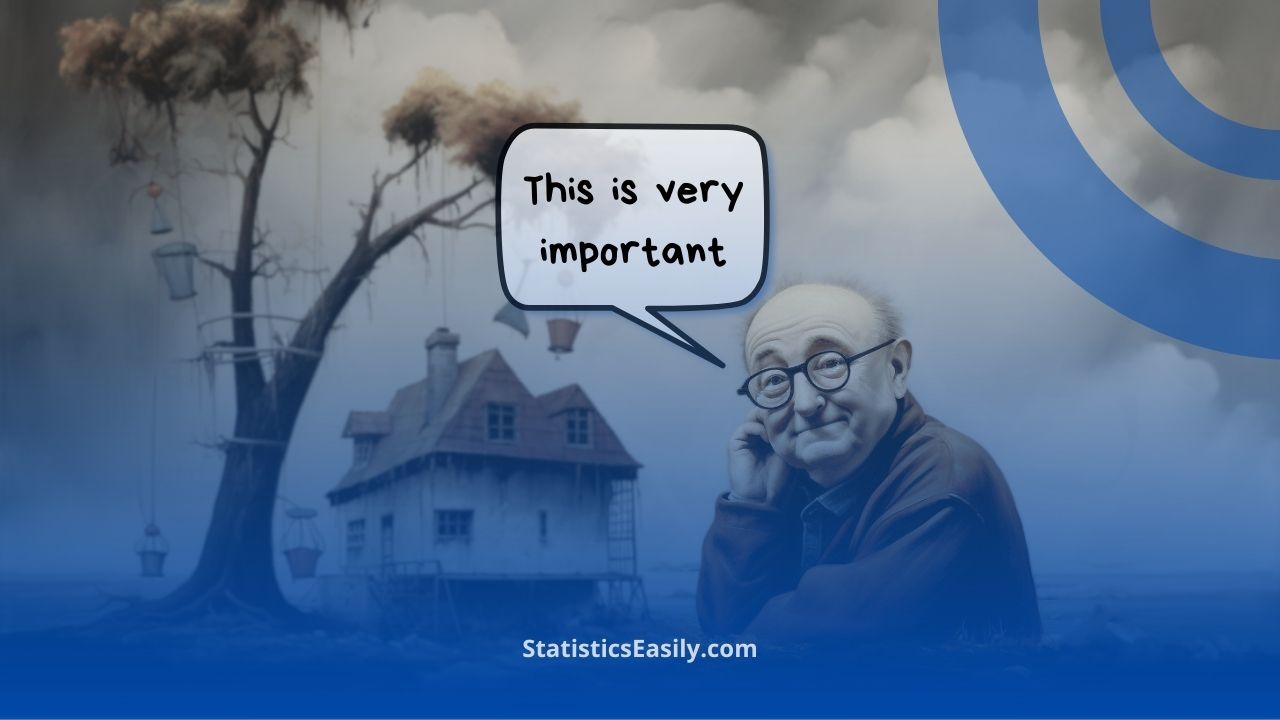Error Bars in Graphs: What They Tell Us About Data
You Will Learn the Critical Role of Error Bars in Data Analysis and Decision-Making
Introduction
Understanding data is critical to making informed decisions, and one tool that plays a vital role in this process is error bars. Error bars are more than just lines on a graph; they are essential for interpreting the reliability and precision of the data presented. By providing a graphical representation of variability, error bars offer a visual measure of uncertainty, which is crucial for any statistical analysis.
Error bars come in various types, each with a specific purpose. They can represent standard deviation, standard error, or confidence intervals. The choice depends on what aspect of data variation the researcher wishes to communicate. Standard deviation bars show the spread of data around a mean. In contrast, standard error bars give insight into the accuracy of the mean itself as an estimate of the population mean. Confidence intervals, on the other hand, define a range within which the true population parameter is likely to lie with a certain level of confidence, usually 95%.
The correct interpretation of error bars is paramount. For instance, when error bars between two means overlap, it could indicate no significant difference, although this interpretation can be nuanced. Conversely, non-overlapping error bars often suggest a statistically significant difference between means.
In scientific research, error bars are not mere decorations but a reflection of the robustness of the findings. They can influence the course of research and the credibility of conclusions. For this reason, error bars are not just a statistical obligation but a necessity for clear and effective data communication. They are the silent narrators of the data’s story, telling us about the precision of our estimates and the confidence we can have in our results.
This article will explore the practical applications of error bars, learn to interpret them correctly and understand their impact on our conclusions. Whether you’re a student, a researcher, or a data analyst, mastering the language of error bars is an essential step towards becoming data-literate and making well-informed decisions.
Highlights
- Error Bars Quantify Uncertainty, Guiding Data Reliability Interpretation.
- Overlapping Error Bars May Suggest Non-significant Difference.
- Non-overlapping Error Bars Often Indicate Statistical Significance.
- Standard Deviation Bars Reflect Data Spread; Confidence Bars Show Mean Precision.
- Proper Error Bar Usage Elevates the Clarity of Research Findings.
Ad Title
Ad description. Lorem ipsum dolor sit amet, consectetur adipiscing elit.
What You Will Learn About Error Bars
In data analysis, error bars are more than just a visual aid; they are a fundamental aspect of interpreting graphs accurately. Their significance lies in their ability to convey the precision and certainty of data points, which is essential for sound statistical analysis and informed decision-making. This section will detail the critical function of error bars and how they bridge raw data and actionable insights.
Error bars are integral to understanding the variability inherent in data. They often depict the error or uncertainty around a measure, typically the mean. These graphical representations can indicate confidence intervals, standard errors, standard deviations, or the range of data, providing context for the variability and reliability of the data presented.
Through this article, you will learn to discern what error bars tell us about statistical significance and data trends. A closer examination of overlapping versus non-overlapping error bars will shed light on their implications for hypothesis testing. Understanding the language of error bars can elevate your analytical skills and contribute to more accurate and reliable interpretations of scientific and statistical data.
Types of Error Bars and Their Meanings
Error bars are crucial to unlocking the story behind the numbers in your data. They represent data variability and come in different types, each elucidating distinct aspects of data spread and precision. While sometimes confused, Standard Error (SE) and Standard Deviation (SD) error bars have different meanings. SE bars give insight into how accurately the sample mean estimates the population mean, indicating the possible error range if the experiment were repeated multiple times. They are a measure of the precision of the sample mean.
On the other hand, SD error bars showcase the variability within the sample data, illustrating how much individual observations deviate from the mean. When you see SD bars, you look at the spread of all data points around the mean, making them broader and providing a sense of the distribution’s width.
Confidence intervals, typically set at 95%, are a third error bar that offers a range where the true population mean is expected to fall if the experiment were repeated infinitely. They are a probabilistic approach to data precision, often used with hypothesis testing to determine statistical significance.
These different types of error bars are crucial for interpreting data correctly. Knowing which type of error bar is used and what it signifies can dramatically alter the conclusions drawn from a dataset. Understanding these differences equips you to analyze the data presented in graphs better and communicate your findings effectively and with greater clarity.
Interpreting Error Bars in Graphs
When interpreting error bars in graphs, understanding the implications of overlapping and non-overlapping errors is crucial. This understanding hinges on grasping what these visual cues signify regarding statistical significance and data comparison.
Overlapping Error Bars
Overlapping error bars, particularly in scientific and statistical graphs, often indicate that the difference between the groups or conditions being compared may not be statistically significant. However, this is not a hard and fast rule. The extent of the overlap and the type of error bars used (standard deviation, standard error, or confidence intervals) can influence this interpretation. For instance, a slight overlap in standard deviation bars might still suggest a significant difference. In contrast, the same level of overlap in standard error bars could imply a non-significant difference. It’s essential to consider the context and the specific statistical test used.
Non-overlapping Error Bars
In contrast, non-overlapping error bars generally suggest a statistically significant difference between the groups or conditions compared. This is particularly the case with standard error and confidence interval error bars. When these error bars do not overlap, it usually indicates that the means of the groups are different enough to be considered statistically significant. However, this, too, should be interpreted with caution. Non-overlap does not automatically mean a profound or meaningful difference, especially in the context of practical significance.
Critical Interpretation
The interpretation of error bars is not merely a visual exercise but a statistical one. Researchers must consider the type of error bar, the sample size, the data variability, and the specific statistical tests applied. Error bars offer a window into the data’s reliability and precision. Still, they are part of a larger analytical process that requires careful consideration of all these factors.
This nuanced understanding of what error bars represent — both in cases of overlap and non-overlap — is crucial for accurate data interpretation. It helps prevent common misinterpretations and ensures that conclusions drawn from graphical data representations are valid and reliable.
The Role of Error Bars in Scientific Research
Using error bars in scientific research is not just a formality but a fundamental aspect of data interpretation and hypothesis testing. Through various case studies, we can see the profound impact error bars have had on scientific research, shaping methodologies and conclusions.
Medical Research – Drug Efficacy Studies: In clinical trials, error bars have played a crucial role in determining the effectiveness of new drugs. For instance, in a study evaluating a new cancer treatment, narrow error bars around the mean survival time indicated high precision and consistency in its effectiveness, leading to its approval for clinical use. Conversely, wide error bars in another study suggested high variability in treatment outcomes, prompting further investigation before approval.
Environmental Science – Climate Change Data: In climate research, error bars are crucial for interpreting temperature and precipitation data — a study on global warming trends utilized error bars to demonstrate the confidence level in temperature rise predictions. The overlap of error bars across different models indicated a consensus on the general trend despite differences in specific predictions.
Astronomy – Cosmic Discoveries: Error bars have been pivotal in astronomical observations. For example, error bars helped assess the reliability of the measurement techniques in measuring the distance of a newly discovered star. Smaller error bars indicated a higher precision, bolstering the study’s findings.
Behavioral Science – Psychological Experiments: In psychology, error bars are used to interpret the variability in human behavior. A notable study on cognitive biases used error bars to show the range of responses in decision-making tasks, demonstrating significant differences between groups with and without bias awareness training.
Economics – Market Analysis: Economic research often relies on error bars to interpret market trends and consumer behavior. A study analyzing consumer spending patterns used error bars to show the variability in spending across different demographics, providing insights into market segmentation and targeting strategies.
These case studies underscore the versatility and necessity of error bars across various scientific disciplines. They provide a visual representation of data variability and precision, aiding in the accurate interpretation of results. Understanding and correctly applying error bars can mean the difference between a groundbreaking discovery and a misguided conclusion. In essence, error bars are critical in the scientific toolkit, ensuring that research findings are robust, reliable, and credible.
Ad Title
Ad description. Lorem ipsum dolor sit amet, consectetur adipiscing elit.
Common Misconceptions About Error Bars
Error bars are a staple in data visualization, yet they are often misunderstood or misinterpreted. This section aims to clarify common misconceptions and clarify what error bars do and do not show.
Misconception: Overlapping Error Bars Always Indicate No Significant Difference
Clarification: Overlapping error bars do not automatically mean that the differences are statistically insignificant. The interpretation depends on the type of error bars and the extent of the overlap. For example, a small overlap in standard deviation error bars might still suggest significant differences. At the same time, the same may not hold for standard error bars.
Misconception: Error Bars Show the Range of Data Values
Clarification: Error bars do not represent the range of the data itself but rather the variability or uncertainty around a specific statistic, usually the mean. For example, standard deviation error bars show how spread the data points are around the mean, not the data’s highest and lowest values.
Misconception: Non-overlapping Error Bars Guarantee Significant Differences
Clarification: While non-overlapping error bars often suggest a statistically significant difference between groups, this is not a definitive rule. Non-overlap does not inherently indicate a meaningful difference, especially when considering the practical implications of the data.
Misconception: Error Bars Indicate the Quality of the Data
Clarification: The presence of error bars does not necessarily reflect the quality or reliability of the data. They provide a visual representation of statistical uncertainty. Data quality is determined by other factors such as the research methodology, sample size, and data collection process.
Misconception: Larger Error Bars Always Indicate Poor Data
Clarification: Large error bars do not inherently mean the data is unreliable or flawed. They may indicate higher variability within the data set or a smaller sample size. Understanding the context and specific statistical measures used before drawing conclusions about the data’s reliability is crucial.
Misconception: Error Bars Are Only Necessary in Scientific Research
Clarification: While commonly used in scientific research, error bars are applicable in any field where data visualization and interpretation are critical. They are valuable tools in economics, social sciences, business analytics, and more, providing insights into data variability and precision.
Misconception: All Error Bars Are Created Equal
Clarification: Different types of error bars serve different purposes. Standard error bars are used to indicate the precision of the sample mean. In contrast, standard deviation bars show the spread of the data. Confidence intervals provide a range where the true population mean will likely fall. Each type offers unique insights into the data.
Misconception: Error Bars Can Identify Outliers
Clarification: Error bars do not directly identify outliers in a data set. They represent variability or uncertainty around a central tendency not to highlight individual data points that may be unusual or abnormal.
Misconception: Smaller Error Bars Always Indicate Better Data
Clarification: Smaller error bars may suggest less variability and higher precision, but they do not always equate to better or more accurate data. The interpretation of error bars should be contextual and consider the nature of the data and the research question.
Misconception: Error Bars Are Unnecessary in Descriptive Statistics
Clarification: Even in descriptive statistics, error bars can provide valuable information about the variability and uncertainty of the estimates. They add a layer of information, enhancing the interpretation and understanding of the data.
Understanding what error bars represent and their limitations is crucial for accurate data interpretation. This clarity ensures that conclusions drawn from data visualizations are based on sound statistical reasoning, not common misconceptions.
Best Practices for Using Error Bars
Using error bars in data visualization is essential for accurately interpreting and communicating statistical findings. This section provides guidelines for applying error bars effectively in data visualization, ensuring clarity and precision in the representation of data uncertainty.
Choose the Right Type of Error Bar: Select error bars based on the information you want to convey. Use standard deviation bars to show data variability, standard error bars for the precision of the mean, and confidence intervals to indicate where the true population mean is likely to lie.
Understand the Data Distribution: Understanding the underlying data distribution before applying error bars is essential. Error bars can be misleading if the data is not normally distributed or if there are outliers that significantly affect the mean and standard deviation.
Use Consistent Scales: Ensure that the scales on your graphs are consistent when comparing groups or conditions. Inconsistent scales can lead to misinterpretation of the error bars and the differences they represent.
Avoid Overcrowding: Avoid overcrowding your graph when presenting multiple data sets with error bars. Overcrowding can make it difficult to discern the error bars and interpret the data accurately.
Clarify What Error Bars Represent: Always specify what your error bars represent — whether standard deviations, standard errors, or confidence intervals. This clarification is crucial for the audience to interpret the data correctly.
Consider the Sample Size: The sample size can significantly affect the error bars. Smaller sample sizes typically result in larger error bars, indicating greater uncertainty. Be cautious when interpreting error bars from small samples.
Use Error Bars in Context: Always interpret error bars in the context of the study and the data. They are not standalone indicators but part of a broader analysis that includes the study design, data collection methods, and statistical tests.
Be Mindful of the Overlap Rule: While overlapping error bars often suggest non-significant differences, this is not an absolute rule. Consider the type of error bars and the extent of overlap before concluding.
Error Bars in Digital vs. Print Media: Be mindful of the presentation medium. Digital platforms may allow for interactive exploration of error bars, while print media requires a clear and static representation.
Educate Your Audience: If your audience is unfamiliar with error bars, provide a brief explanation or guide to help them understand what they represent and how to interpret them.
Combine with Other Statistical Indicators: Consider using error bars with other statistical indicators like p-values or effect sizes to understand the data better.
Regular Review and Update: Keep abreast of the latest statistical methods and practices in error bar representation. Data visualization is continuously evolving, and staying updated ensures the most effective and accurate presentation of data.
By following these best practices, researchers and data analysts can use error bars more effectively in their data visualizations, enhancing their findings’ clarity, accuracy, and interpretability. Error bars are powerful tools in statistical communication, and their proper use is fundamental to data literacy and informed decision-making.
Ad Title
Ad description. Lorem ipsum dolor sit amet, consectetur adipiscing elit.
Conclusion
In data analysis and scientific research, error bars serve as a fundamental tool, illuminating the path to understanding and interpreting data with greater accuracy and reliability. This article has delved into the intricacies of error bars, shedding light on their types, meanings, and significance in data interpretation. As we conclude, the critical role of error bars in enhancing data literacy becomes undeniably clear.
Error bars, in their various forms, provide a visual representation of data uncertainty and variability. They are not just statistical ornaments but essential indicators that guide researchers, analysts, and decision-makers in evaluating the reliability of their data. From standard deviation bars reflecting data spread to confidence intervals outlining the range of the true mean, each error bar type offers a unique insight into the data’s nature and quality.
Properly using and interpreting error bars is crucial in avoiding common misconceptions and misinterpretations. They demand a nuanced understanding beyond mere visual analysis, integrating knowledge of statistical principles, the nature of the data, and the research context. Error bars demand attention to detail, encouraging a deeper engagement with the data and fostering a more profound appreciation of the intricacies of statistical analysis.
The impact of error bars transcends various scientific fields, from medical research to environmental science, economics, and psychology. They have been instrumental in validating hypotheses, testing theories, and guiding policy decisions. Error bars are more than just tools for researchers; they are the storytellers of data, revealing the tales of variability and precision that lie beneath the surface of numbers and charts.
In an era where data-driven decision-making is paramount, accurately interpreting error bars has become an essential skill. It is a skill that enhances data literacy, empowering individuals to make more informed decisions, whether in academic research, business strategy, or public policy. Error bars are a testament to the importance of statistical rigor and the ongoing quest for truth in a world inundated with data.
As we continue to navigate the vast sea of data surrounding us, the role of error bars as navigational aids in this journey cannot be overstated. They are the compasses that guide us through the complexities of data analysis, ensuring that our conclusions are based not just on the data we see but on understanding the uncertainty and variability that lie within.
Error bars are not just a part of data visualization but a vital component of data literacy. Their correct application and interpretation are key to unlocking the full potential of data analysis, leading to more accurate, reliable, and credible findings. As we continue to advance in our data-driven endeavors, the knowledge and skills to effectively use error bars will remain an indispensable asset in the toolkit of anyone who seeks to understand and utilize data in its fullest capacity.
Recommended Articles
Crave more insights? Dive deeper into data analysis with our collection of articles on Error Bars and more on our blog.
Frequently Asked Questions (FAQs)
Q1: What Are Error Bars in Graphs? They are visual indicators representing the variability and uncertainty in the data points on graphs.
Q2: Why Are Error Bars Important in Statistics? Error Bars are crucial as they provide a visual understanding of the data’s reliability and the statistical significance of the results.
Q3: How Do Error Bars Help in Data Analysis? They help assess the precision of the data collected, especially in determining if a data point is significantly different from others.
Q4: What Do Small Error Bars Indicate? Small Error Bars suggest less variability and more confidence in the precision of the mean data value.
Q5: Can Error Bars Show Data Trends? While not showing trends directly, consistent patterns in Error Bars can suggest data precision and reliability trends.
Q6: How Do You Calculate Error Bars? Error Bars are calculated using statistical measures like standard error, standard deviation, or confidence intervals, depending on the data set.
Q7: What’s the Difference Between Standard Error and Standard Deviation Bars? Standard Error Bars relate to the mean’s precision. At the same time, Standard Deviation Bars show how much individual data points vary from the mean.
Q8: When Are Error Bars Misleading? Error Bars can be misleading if the data distribution assumptions are incorrect or interpreted without considering the sample size.
Q9: Should Error Bars Be Used in All Graphs? While not mandatory in all graphs, Error Bars are recommended in scientific and statistical charts to communicate data variability.
Q10: Can Error Bars Determine Outliers? Error Bars themselves do not determine outliers, but large Error Bars may suggest the presence of outliers affecting the data variability.








